Social media is shaping our society. Learn about their history and future, as well as the best social media strategies to implement this year.
Social media marketing is the use of social platforms (such as facebook or Instagram) to promote your products or services.
On average, a person passes 2.5 hours on social networks and 54% of Internet users use social networks to search for products. It is obvious that this is an element of the marketing landscape that should not be ignored.
Social media marketing can be used to achieve many goals, whether it's increasing brand awareness, increasing traffic to your website, or simply engaging with your customers or prospects in a meaningful way.
All of this can also mean higher conversions and more sales.
The warning? No two platforms are the same, which means that each platform will need a specific strategy to succeed.
It's obvious that the content you share on Pinterest isn't going to work on YouTube.
On the bright side of things? It is likely that you will not need to be present on All the platforms to effectively achieve your social media marketing goals.
Next, we'll discuss the different types of social media marketing and an overview of the main platforms in use today, as well as tips for developing your social media strategy.
But first, let's take a quick look at the history of social media marketing and how it has evolved over the years.
Did you know that Myspace N'was in fact steps the first social media platform to exist?
Believe it or not, social media networks date back to the 1990s, with Six Degrees being the first to lead the way.
First, let's look at where it all began and how social networks have evolved since their inception.
In 1997, the first known social networking site, Six Degrees, was launched.
In short, this social network allowed users to upload photos and connect with others, as many social platforms do today.
As you'll see below, their slogan was”You're only six degrees away from everyone...“. (Hence the name, six degrees).
Six Degrees members could message and share messages on the bulletin board up to the 3rd degree of connection.
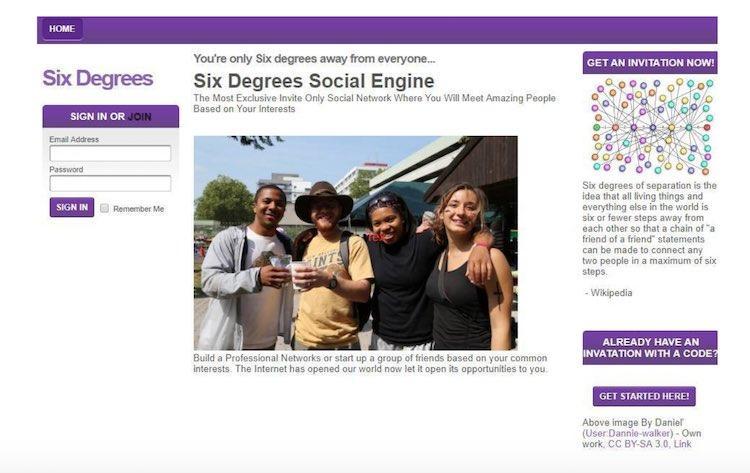
If you are wondering about the fate of this platform, it ended up being sold for 125 million dollars in 2000 and was closed shortly after in 2001.
But all hope was not lost, as he was brought back a few years later.
The next social platform to hit the web was LiveJournal in 1999, a cross between a social network and a blogging platform that encouraged users to share their life stories, as well as exchange tips and ideas.
For many, LiveJournal was considered a personal or digital journal, but with a social aspect that allowed its users to follow and interact with each other.
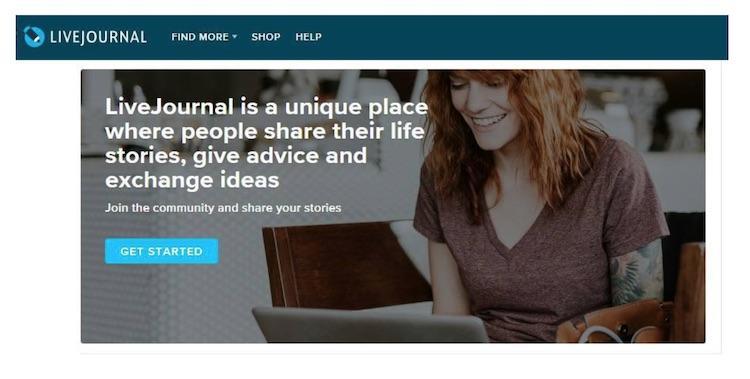
However, the rise and fall of LiveJournal is a bit of a complex story. In 2005, it was bought by a company called Six Apart, which then sold the platform to the Russian-based media company SUP Media in 2007.
From there, things got complicated for the majority of Russian activists and journalists that the platform attracted during a period of government censorship, which you can read more about hither.
Friendster was founded in 2002 and quickly gained popularity. In the first few months, the platform gained 3 million users!
This platform was created as a classic social network, with additional functionalities for meetings and the discovery of events, groups, etc.

Despite its popularity, Friendster was ultimately unable to evolve and meet growing demand, leading to its terminal fall in 2015.
2003 was a big year, giving birth to Myspace and LinkedIn.
Myspace was founded thanks to the inspiration of the social media platform Friendster and the potential that a few users saw in the various social networking features.
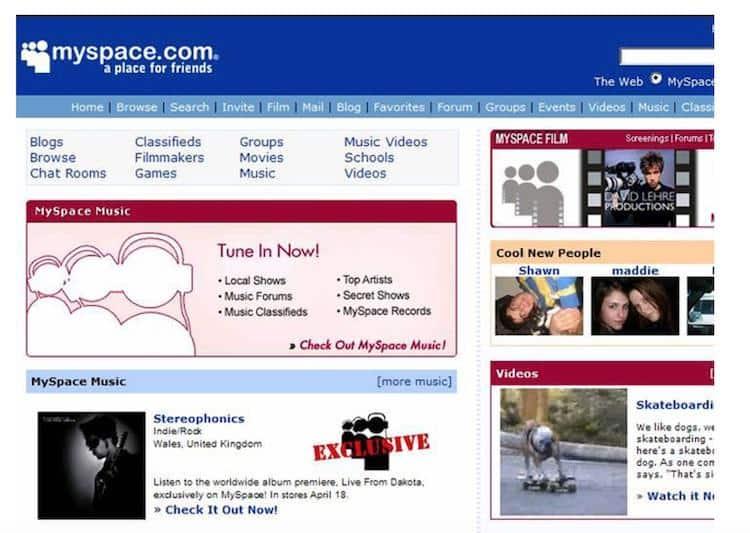
Shortly after, Myspace was born with even more features and customization possibilities, allowing users to customize the appearance of their profiles and pages.
It's no secret that Myspace was the world's largest social networking site from 2005 to 2008 with over 100 million monthly users.
However, in 2008, Myspace quickly began to plummet due to its rival, Facebook, and ended up changing its focus to exclusively target musicians and creators as a means of promoting itself.
Another newcomer to the social media scene in 2003 was LinkedIn, a business-oriented platform that offers a new orientation for social media users.
The focus was on establishing professional relationships and helping users in their job search.

The difference between LinkedIn and other platforms such as Myspace or LinkedIn is obvious, but in case you are not aware of what the platform offers.
And that's just the tip of the iceberg. Still as powerful as ever, this platform now has more than 700 million members.
It is very likely that if you are reading these lines you have your own Facebook profile or page.
Launched by Mark Zuckerberg in 2004, Facebook is known for quickly overtaking rival Myspace, which was the first in the game.
When it launched, Facebook was restricted to students at Harvard, then to other universities in the Boston area and to Ivy League schools, before becoming available to the rest of the world.
Facebook quickly became the largest social media platform in the world, reaching overone billion users in 2012.
Today, Facebook is still going strong with more than 2.912 billion active users and is one of the most visited sites on the web.
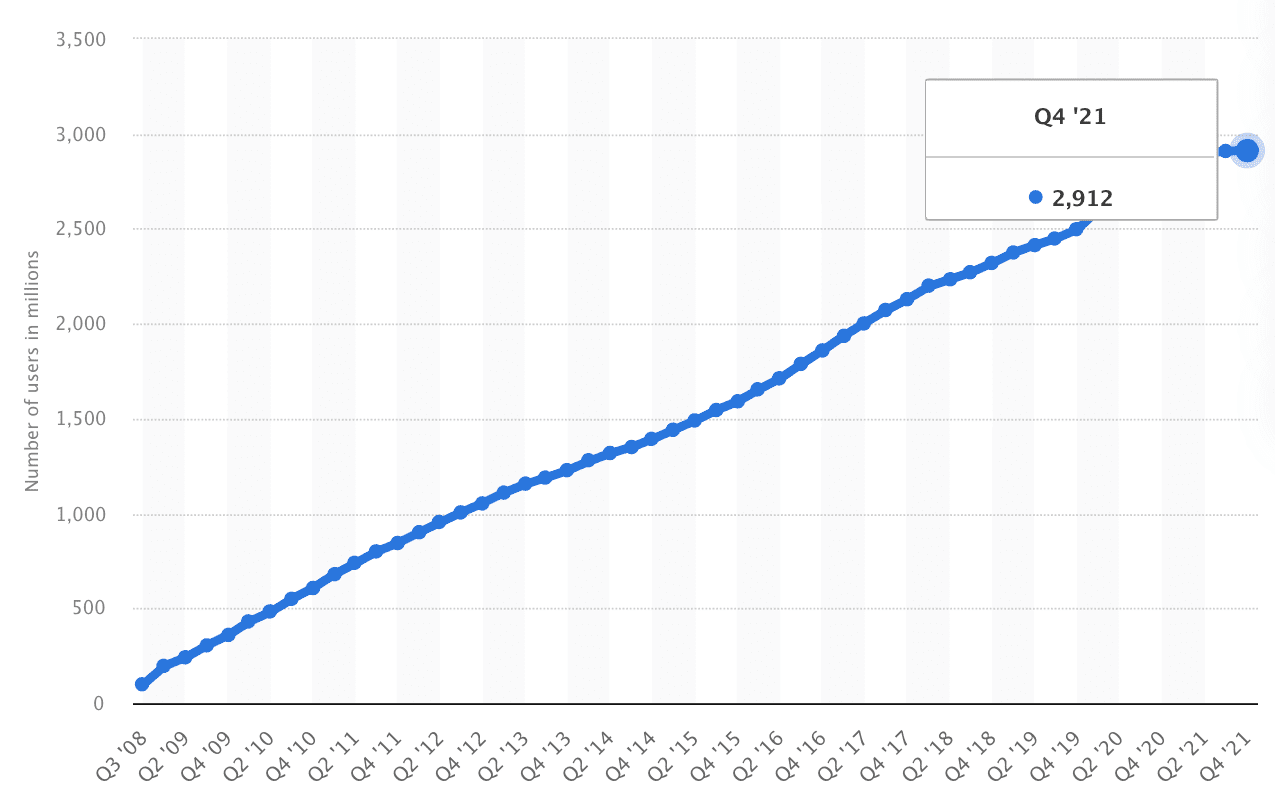
At the end of 2021, for the first time since its creation, Facebook saw its number of active users drop slightly.
Founded by 3 Paypal employees, YouTube was created as a platform that allowed users to upload, share, and watch video content.
YouTube was the first platform of its kind focused on video content and streaming.
So it's not surprising that it reached 2 million daily viewers just six months after its launch.
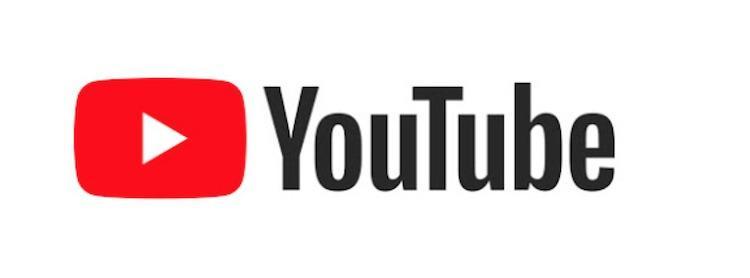
Today, YouTube has more than 2 billionusers around the world and, as video content is in increasing demand, it doesn't seem to slow down anytime soon.
2006 was the year Twitter was launched, a platform considered to be a cross between microblogging and social networks.
The main concept of Twitter was to be able to communicate shorter messages or “tweets”, which should not exceed 280 characters (previously limited to 140 characters)

Today, the platform has more than 330 millionactive users around the world and its focus ranges from sharing quick updates by daily users to being able to interact with celebrities.
Business owners and marketers have also seen it as a way to promote their brand, and the platform has even served as a basic communication tool in election campaigns.
Known as one of the largest social media platforms in the world (and finally bought by another social media giant, Facebook), Instagram came into the world in 2010 and took the world by storm.
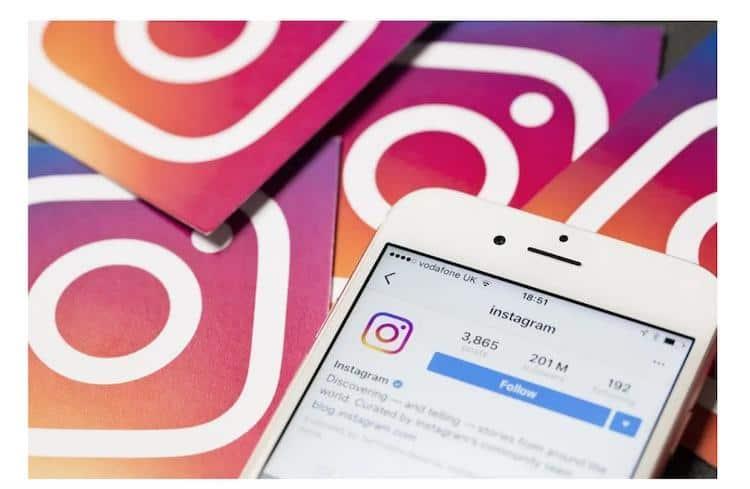
Instagram quickly established itself as the first social media platform for sharing photos and videos of its kind, encouraging its users to take photos directly from the app and share them with their followers.
Today Instagram has over 1 billion monthly users, and 500 million of them use their brand new “stories” feature every day.
A year after the launch of Instagram, Snapchat, the application known for sending disappearing photos and videos, was founded.
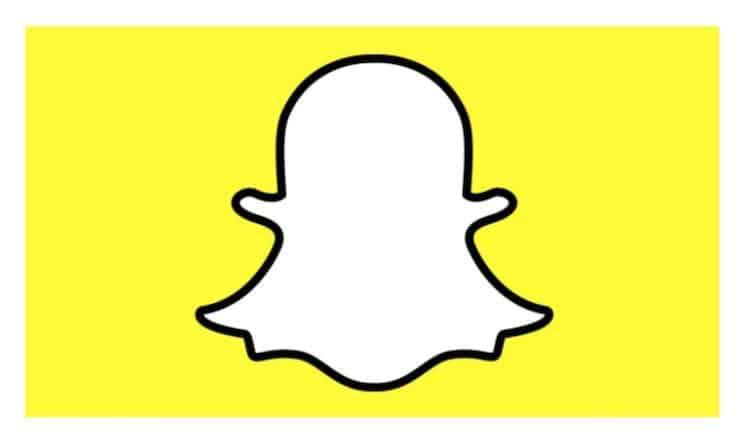
Essentially, Snapchat can be thought of as a cross between a messaging app and a social platform.
Snapchat stood out for its ability to allow users to send photos, videos, or text messages that disappear after a certain number of seconds and quickly grew in popularity.
In addition, Snapchat also has other social features like stories, press and media discovery, ad campaigns, and more.
Today, Snapchat has more than 229 milliondaily active users worldwide, and over 63% of users report using the app every day.
In September 2016 in Beijing, a Chinese multinational called ByteDance launched an app called A.me, which was later renamed Douyin. The app was built to create short, looping clips of 3 to 60 seconds that include music, lip-sync, comedy, and dance videos.
ByteDance founder Zhang Yiming was worried about only being present in the Chinese market and said:
“If China does not develop globally, we are doomed to lose to our peers who are aiming for 4/5ths. It is therefore essential to go global.”
Within a year, Douyin had 100 million active users. In September 2017, TikTok entered the international market, and by 2018, it had become global.
Today TikTok was uploaded more than 2 billion times and has 700 million active users.
TikTok has grown exponentially and is now a major player in the social media marketing landscape.
Now that we have covered the history of social networks from the first platform created in 1997 until we are where we are today.
We're going to dive into social media marketing, starting with the 2 types of social media marketing and their differences.
When it comes to social media marketing, marketers often use 2 approaches (or a mix of both in an ideal world):
An organic social media strategy is one that tends to focus on unpaid ways to reach the target audience.
For example, when you share content on Facebook or Instagram and it appears on your audience's news feed, that's an example of organic reach since you didn't pay for that exposure.
In general, organic social media strategies tend to focus on increasing brand awareness as well as engaging and developing an audience.
As any content marketer knows, the goal of every piece of content isn't always to increase conversions.
Sometimes it's just a matter of engaging your audience and nurturing them over time, so that when you launch your next offering, they'll be familiar with your brand and ready to buy.
This is the beauty of an organic social strategy combined with content marketing.
We are now going to look at paid strategies on social networks and how they differ from an organic approach.
In short, paid marketing on social networks or pay per click (PPC) consists of paying a platform such as Facebook or Instagram to display your advertising content to its users:
However, to ensure that you get the best return on your ad spend, your ads won't be shown to just any user.
Typically, social media ads are delivered to a group of users based on a set of target demographics or similar audiences:
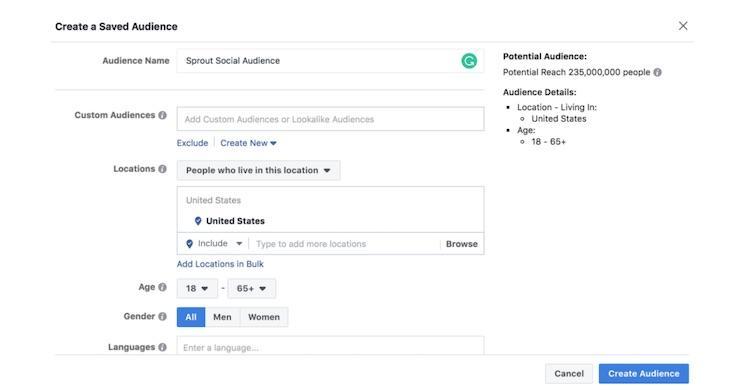
Paid ads allow you to reach new users who may not yet know your brand - which is why you're paying for this new exposure.
Paid ads can be displayed in various formats depending on the platform, ranging from a simple text, a static or dynamic image, a carousel, and even videos or other stories.
Initially, an image or a text ad was enough to convert an Internet user into a buyer.
Today, video content is gradually taking over and more 500 million users Active daily on Instagram stories, times are changing and marketers need to be creative in their approach.
If you thought paid ads were the only form of paid social media marketing, think again.
Influencer marketing is rapidly taking the world by storm and is an industry that should reach 16.4 billions of dollars in 2022.
In short, influencer marketing is a collaboration between a brand and an influencer in order to increase brand recognition or conversions among a specific audience.
If you weren't already aware, an influencer or thought leader is someone who has a fairly large audience in a specific niche and is considered an authority figure in that field.
For example, thanks to this blog, I am often contacted by SaaS companies looking to collaborate, because I often write articles like The one about the best tools for creating websites.

Through my SaaS software reviews on this blog, I generate revenue for these businesses through their affiliate programs.
It's no secret that influencers are known for their ability to influence the buying decisions of their followers due to their authority or expertise in their niche.
But before you start blindly spending money on an influencer campaign, it's important to set goals and parameters like any other paid or unpaid campaign..
Depending on whether the objective of the influencer marketing campaign is to increase brand awareness or to convert, influencers are measured on a set of KPIs.
When looking for an influencer to help you increase brand awareness, for example, you can evaluate influencers based on the following metrics:
The influencer seduces his audience with, for example, discount codes, encouraging them to make a purchase from the brand they promote.
Hopefully you've realized that there's no one-size-fits-all solution for paid social media campaigns or influencer marketing.
Now let's recap some of the benefits of paid advertising on social media.
Now that we've covered the different types of social media marketing and the differences between organic and paid channels, let's discuss the different social networks that are available to us.
When choosing a social media platform to use as part of your marketing strategy, part of the decision will depend on whether you are a B2B brand. (business-to-business) or B2C (business-to-consumer).
As well as the customers you are targeting and the platforms on which these users are the most active and engaged.
We're going to dive into the 7 most popular social networks and how you can use each one based on your business and goals.
The king of social platforms, Facebook is an essential part of your toolbox, from small businesses to retail giants and e-commerce businesses.
As Facebook has over 2 billion users, it is an effective social network for generating traffic in the B2B and B2C sectors.
The first step to successfully using Facebook in your social media strategy is to start by creating a Facebook business page:
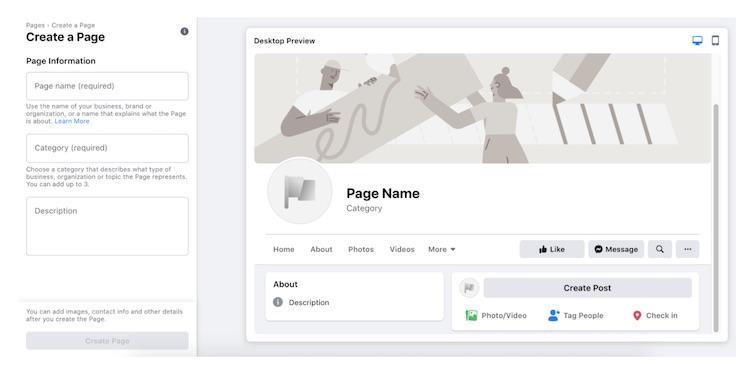
Once you have an official business page on Facebook, the options are limitless.
The type of content that you post on the platform will largely depend on the above, as well as your strategy, which we'll discuss below.
Once you've created your Facebook business page, you have a variety of marketing tools at your disposal from a single dashboard:
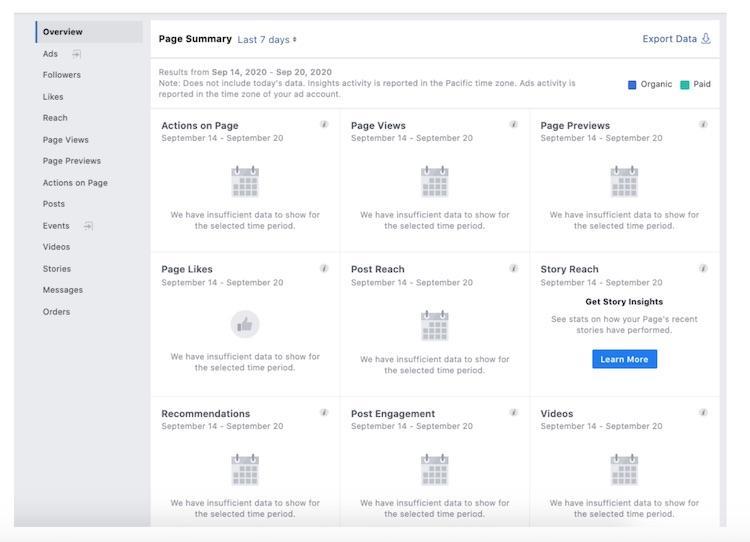
These analytics tools will be particularly useful for sharing content, as they will allow you to get information about the types of content that resonate most with your audience.
Facebook organic content can be useful for maintaining the interest of your audience and nurturing them over time while slowly building trust and authority in your niche.
There was a time when organic reach was high and you could establish yourself on Facebook without having to rely solely on Facebook ads.
However, times have changed and competition is still intensifying. To be visible...
Facebook ads are going to play a critical role in most social media marketing strategies. Nowadays, brands have to pay to appear in their audience's news feed.
On the positive side, Facebook ads tend to be linked directly to conversion goals and are generally more responsible for increasing sales than an organic Facebook post.
To start using Facebook ads, you can create a campaign from your dashboard based on your goal:
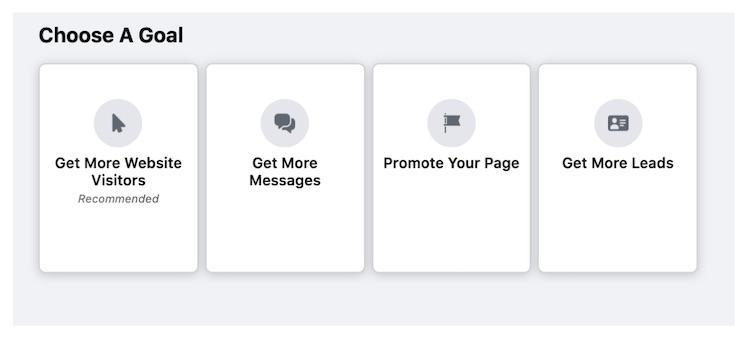
After selecting your campaign objective, you get access to more advanced targeting options, which allow you to target users based on several criteria:
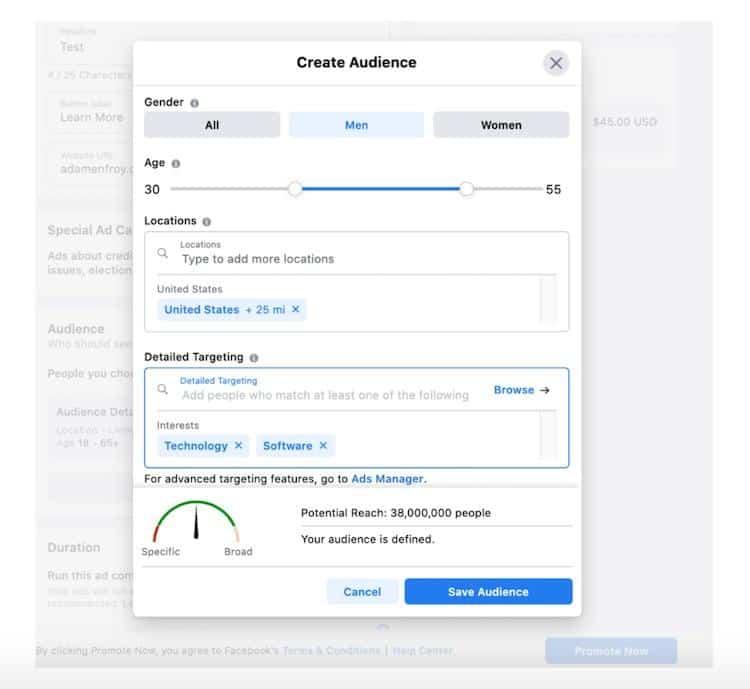
As you can see above, you can be as specific or as broad as you want in your targeting.
However, generally speaking, the more specific you are, the more likely you are to reach the right target audience.
After defining the target demographics for your Facebook advertising campaign, you will be able to enter your daily budget and receive estimated results based on the data entered:
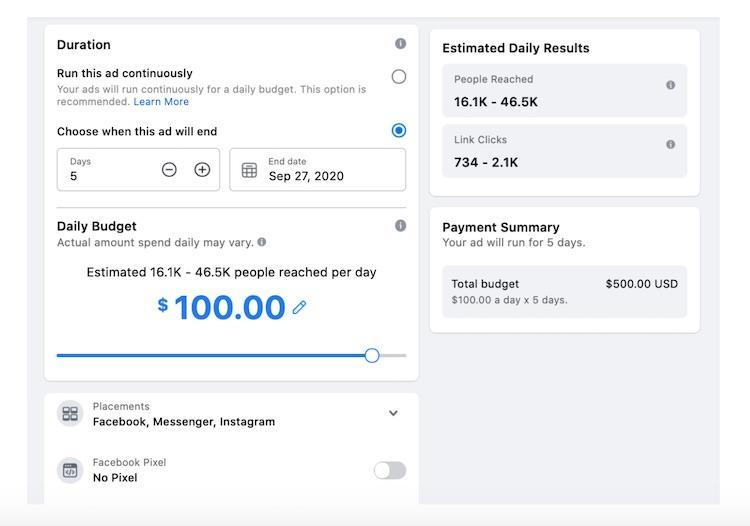
Overall, Facebook remains the king of social media and has powerful advertising capabilities for brands looking to achieve direct response goals.
With over 1 billion active users, Instagram is yet another social media marketing platform of choice.
In fact, Instagram's ad spend is 23% higher than Facebook's and for good reason.
Not to mention that it still has a great organic reach thanks to the use of hashtags and the discovery tab:

Instagram works particularly well for brands targeting B2C markets, and is in particular a popular choice among e-commerce specialists.
With more than 90% Instagram users who follow at least one business on the platform and an average daily usage time of up to 53 minutes per day, it goes without saying that brands should also be active on the platform.
The first step in getting started with Instagram marketing is creating an Instagram account and setting it up as a business profile:

Once you've created your business profile, you'll have access to a variety of built-in analytics tools to track and measure account growth and engagement.
For example, you can be very successful on the platform simply by integrating targeted hashtags and posting at the right times.
However, it is important not to rely on assumptions.
Once your Instagram account has built a small audience, the platform itself will tell you the best times to post based on the days and times when your audience is most engaged.
Within the insights in your Instagram business profile, you'll also have access to the demographics of your audience, such as their age, gender, and location:

All of this data will prove to be incredibly useful in creating and optimizing your Instagram marketing strategy.
If you're worried about the time it takes to manage your social channels, including your Instagram account, there are also plenty of social media management tools that you can use to schedule posts in advance and increase your Instagram followers.
Aside from regular feed posts, there are multiple ways to advertise on Instagram, including:
Instagram continues to evolve, as do the features that users tend to focus on the most.
If you're not familiar, Instagram stories are similar to Snapchat stories in that they remain visible for 24 hours after they're posted (that is, unless you add them to a “highlight” on your profile):
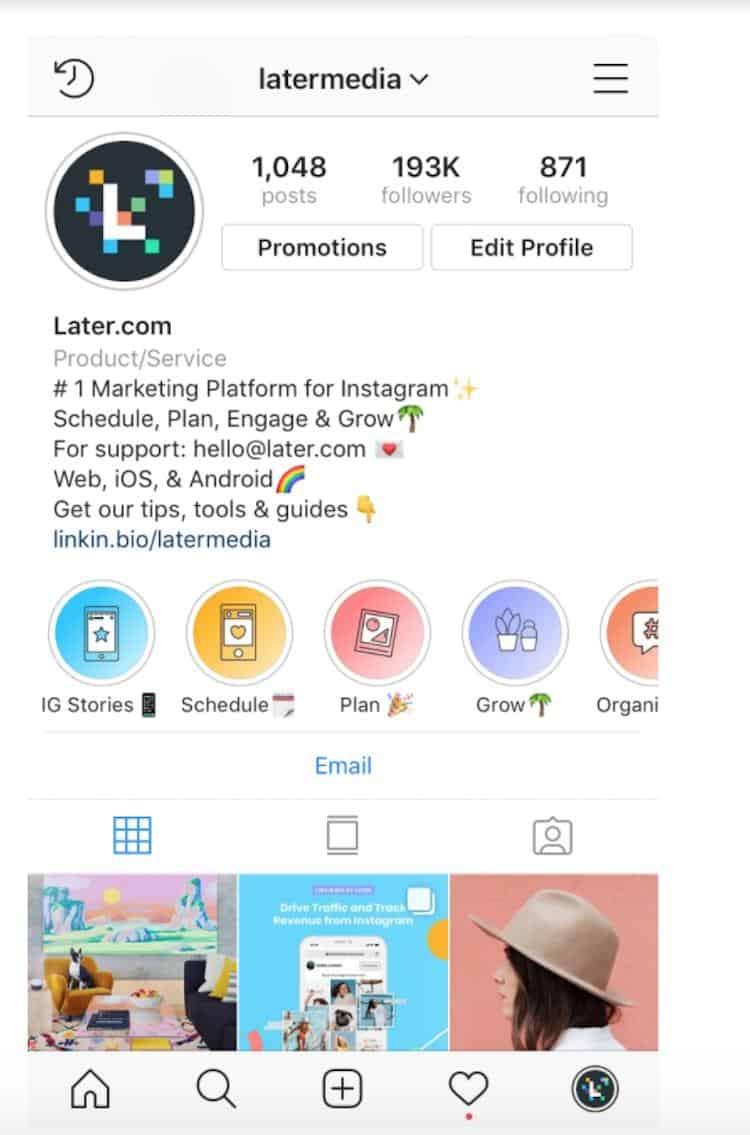
The main difference between Instagram story posts and feed posts is that stories appear as a slideshow and tend to be more interactive than feed posts thanks to features like live video, polls, Q&A, chat, gifs, and more.
Right now, Instagram stories have over 500 million daily users and are rapidly outpacing the content of traditional feeds...
Brands are therefore starting to take an interest in it, because it is a place of choice for advertising on the platform, which allows you to contact users in real time.
It's much easier to stay in the minds of your target audience when your story is displayed at the top of their app, rather than having to rely on them to scroll through their feed and hope to see your messages.
You can be creative with your stories by including direct calls to action (CTAs) for users to contact you, swipe up to subscribe to your newsletter list, and more.
The options are really endless with Instagram stories.
With an Instagram business account, you can create Instagram ads without having to do so via the Facebook platform. (Facebook acquired Instagram in 2012).
However, you also have the option of creating Instagram ad campaigns from Facebook's ad manager, for those who prefer to work from a computer.
With Instagram ads, you have several options for posting sponsored content, ranging from:
Instagram story ads are a convenient way to carelessly interrupt your target audience's story viewing time and get their attention.
Unlike traditional stories, users don't need to follow your account to see your ad.
Indeed, Instagram, like Facebook, offers advanced targeting options when setting up an advertising campaign:
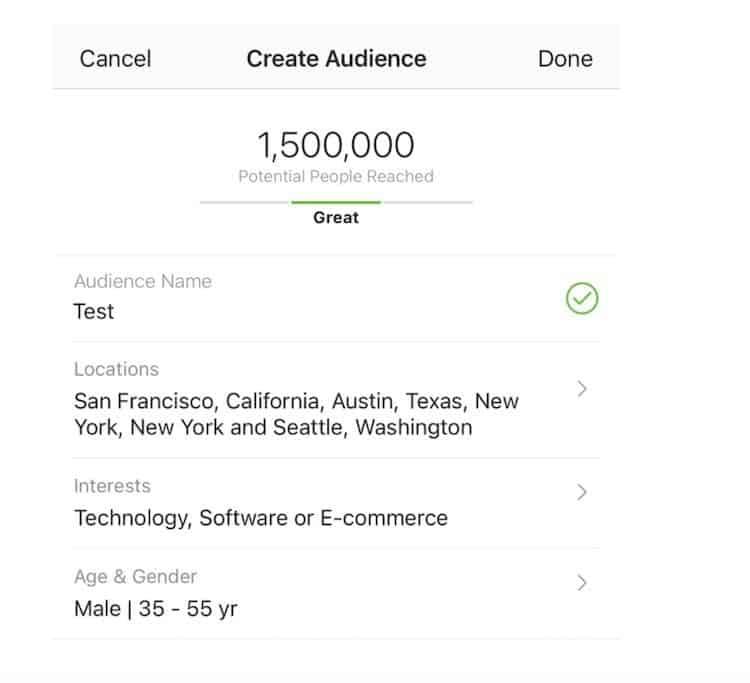
As a marketer, you'll get the most results by being as clear as possible about the audience you're targeting, so keep that in mind when creating ad campaigns.
Once the campaign is live, users will see your ad by browsing the stories on their feed, making it look natural.
However, the difference between regular stories and sponsored stories is that the latter don't disappear after 24 hours.
Instead, you can determine how long the campaign lasts and how often users see it.
The next topic to discuss is carousel ads, which have become popular on Instagram and Facebook recently.
In case you didn't know, carousel ads are unique in that they combine multiple images or videos into a single ad:

This type of ad is known to have a higher click rate of 72% to that of traditional ads.
As you can see above, carousel ads are a great way to display multiple images with a touch of interactivity, which is great for driving sales and conversions.
Instagram photo ads are known as the “standard” or typical way to display ads on the platform:
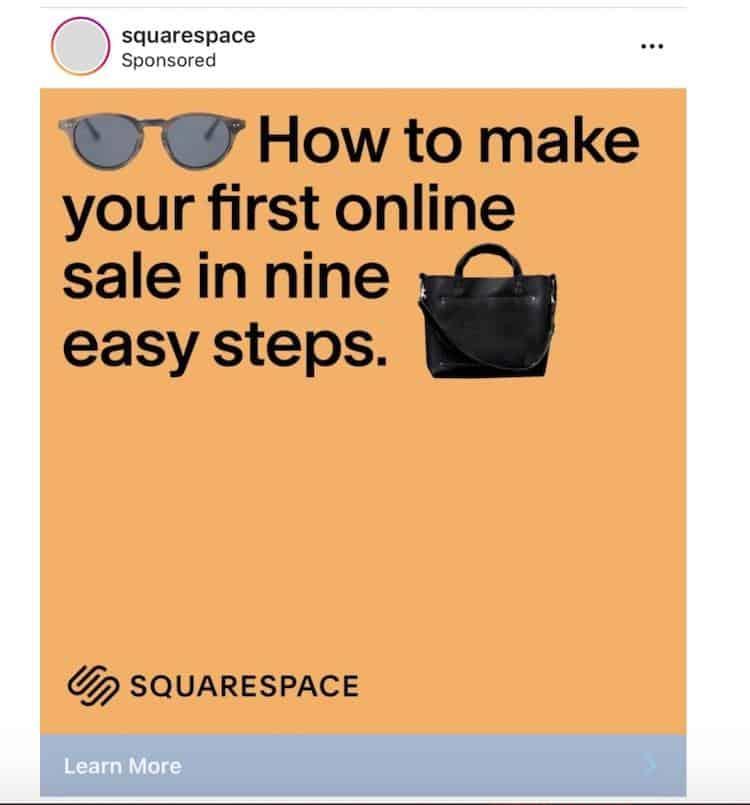
Each time a user scrolls through their news feed and comes across a sponsored post that looks like any other post (except for the word “Sponsored” above), this is an Instagram photo ad.
You've probably seen dozens of them without even realizing it while browsing the platform.
It's not for nothing that the video gets more than 20% ofmore interactions compared to traditional photo ads.
In this day and age, if you want to stand out, you need to start producing video content.
Video ads are similar to photo ads, except that the content is a video rather than a photo:

For best results, try testing a variety of ads that include both photos and videos in your social media marketing strategy and compare the results.
By using the right advertising formats and following the return on investment, there are plenty of opportunities to make money with Instagram.
If you've been following social media marketing trends lately, you know that TikTok is booming.
But before you roll your eyes to the sky and say that the platform is only for children and adolescents...
Remember that TikTok currently has over 800 millionactive users around the world and that it is on track to become one of the fastest growing social platforms in the world.
Furthermore, only 41% of its users are between the ages of 16 and 24, which means it can be just as effective for businesses as it is for content creators.
If you haven't jumped on the TikTok bandwagon yet, let me let you know...
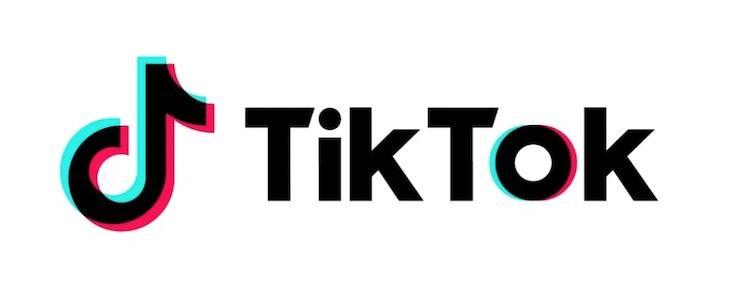
TikTok is essentially a video platform and is especially famous for its hashtag challenges.
Generally speaking, entertainment is the watchword when it comes to marketing on TikTok.
With 15-second videos, the aim is to entertain and interest users so that they click on your profile to find out more in order to follow you.
As this is a new platform that was just launched in 2016, organic reach is still at its peak.
This means that brands and businesses are able to effectively reach their target audience by only sharing organic content and being found through the use of hashtags and the discovery tab:
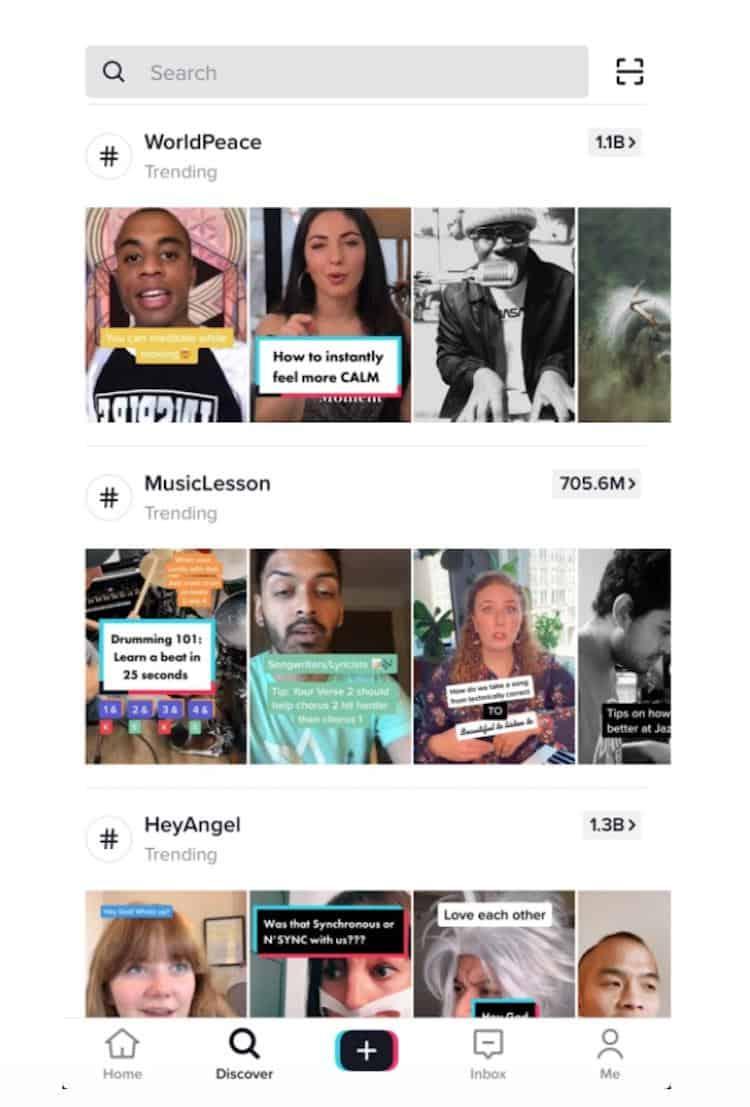
For brands that don't yet have a strong following, another option is to partner with influencers to increase their reach and exposure.
Influencers with their own social networks can be beneficial partners, as long as they have engaged followers that match your target demographic.
For best results, I recommend starting your own #hashtag challenge and partnering with an influencer to help promote it.
When done right, it's a sure way to go viral, quickly.
As the platform is still new, additional advertising options are still under development. So for now, it's a good idea to start taking advantage of the organic growth opportunities offered by the platform.
While it may seem like Instagram stories have completely overtaken Snapchat, the platform still has a place in your marketing toolbox. (especially for B2C marketers).
However, this will depend entirely on your target audience. If yours happens to be the millennials, you're in luck because 82% Snapchat users are under 34.
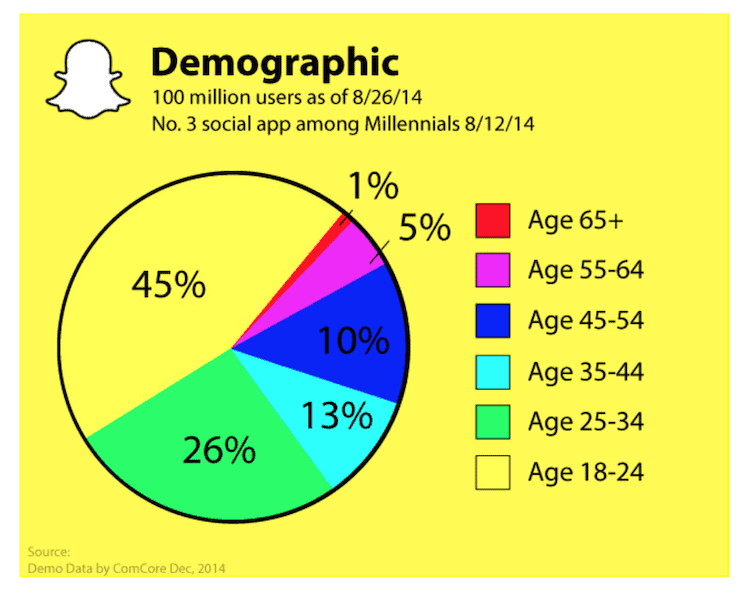
However, if your audience consists mostly of middle-aged or older people, it's probably best to focus your marketing efforts elsewhere.
For those looking to appeal to younger audiences, Snapchat can be a great platform for keeping users engaged through Snapchat stories:

And if you're not convinced yet, know that the average Snapchatter visits the platform. 18 times per day, leaving you with plenty of room to be seen and heard.
When it comes to marketing on Snapchat, there are a variety of methods and features that you can use to promote your business.
Because of the nature of the platform, it can be ideal for creating a sense of urgency and anticipation for launches, sales, and events:
Snapchatters are known for being 60% more likely to make impulse purchases on the platform.
What better way to take advantage of it than by offering a discount code?
Try sharing a coupon and encourage users to act quickly if they want to use the code before the item disappears in 24 hours.
If you receive replies to your stories, ensure that a team member is available to respond to messages on the platform.
It enriches the customer experience and contributes to customer loyalty.
Ultimately, the name of the game when it comes to Snapchat is engaging and encouraging some form of interaction from your followers.
Follow these tips and you'll be successful in your Snapchat marketing efforts.
If your target audience consists of businesses (B2B), then LinkedIn is a platform that certainly deserves one of your first targets...
One thing that has remained constant with LinkedIn is the fact that users are there for one thing and one thing only: to do business.
The only platform of its kind, LinkedIn is focused on networking, learning, and growth opportunities, as well as sharing and discovering job opportunities.
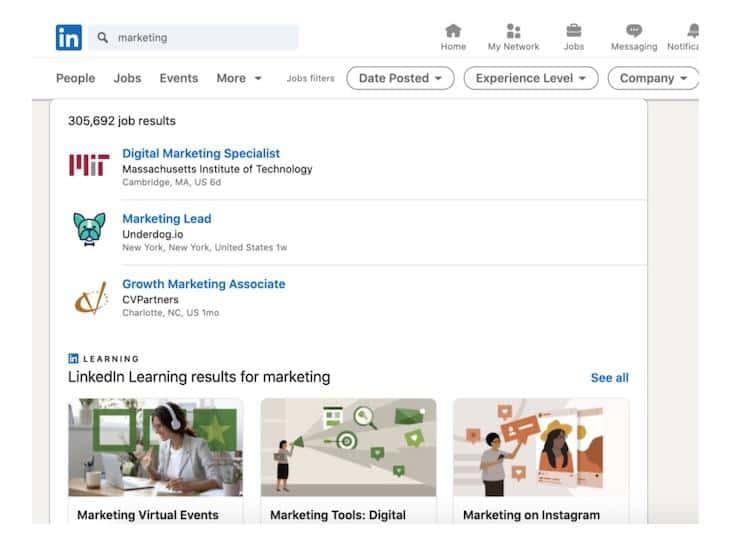
When it comes to integrating the platform into your social media marketing strategy, there are several possible approaches.
Although the platform is no longer in its infancy, LinkedIn's organic reach is still out of the ordinary.
Many B2B marketers are starting to realize how easy it is to get noticed on the platform, by simply following a few simple strategies.
First of all, the aim on this platform should always be to only publish and share high-quality content with your audience.
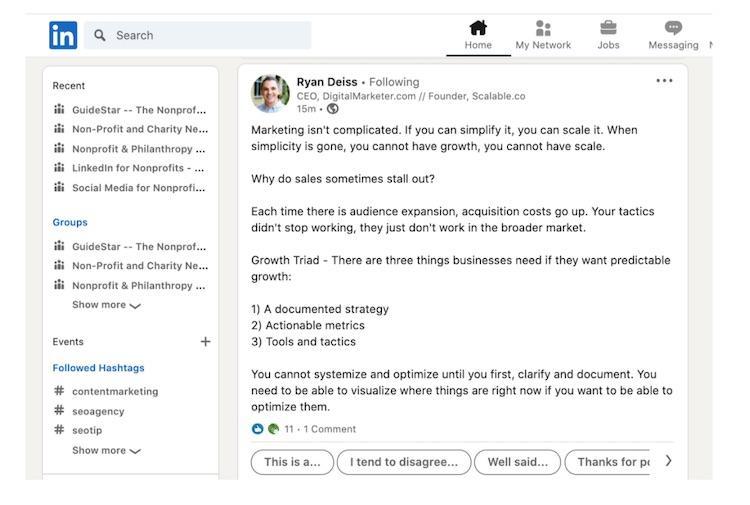
Ideally, when sharing organic content on LinkedIn, your posts should either solve a problem for your audience or serve to establish you as a thought leader in that area.
Next, remember that LinkedIn's algorithm favors those who post high-quality content on a regular basis.
That means you're more likely to show up in the feeds of your connections and followers if you do.
Another way to get noticed with organic content is to use strategic hashtags in your LinkedIn posts:
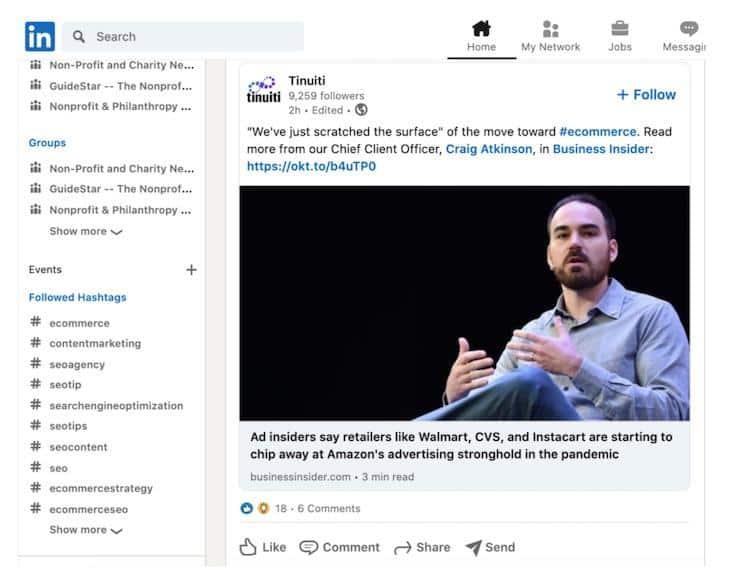
As you can see in the left sidebar, users can follow hashtags to keep up to date with news and trends on certain topics.
Even if it is not displayed and revealed, it is more or less easy to understand the algorithm for go viral on LinkedIn by testing and staying informed through the most informed content creators on the market. The quality
LinkedIn groups are another way to take advantage of LinkedIn:

On LinkedIn, you can find a group for virtually any industry and niche, making it a great place to network and promote your brand.
Rather than spamming groups with advertising options, a more effective strategy will be to provide value to group members through useful and engaging content:
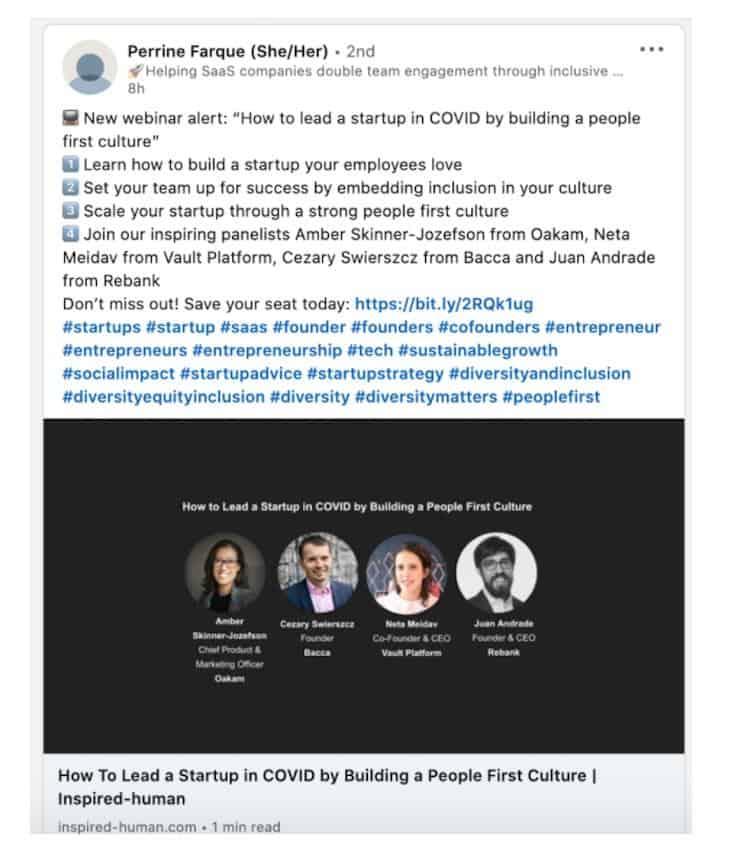
If you're not sure where to start with LinkedIn groups, try looking for groups that relate to your industry and browse them to see what others are posting or asking questions.
Once you have found the right formula to reach more users and expand your network, you can focus on different tools to automate LinkedIn Or at Sales Navigator to accelerate your strategy.
Just like Facebook and Instagram, LinkedIn also offers its own version of PPC, or LinkedIn Ads.
Sharing sponsored content on the platform can be a great way to complement your organic strategy on LinkedIn:
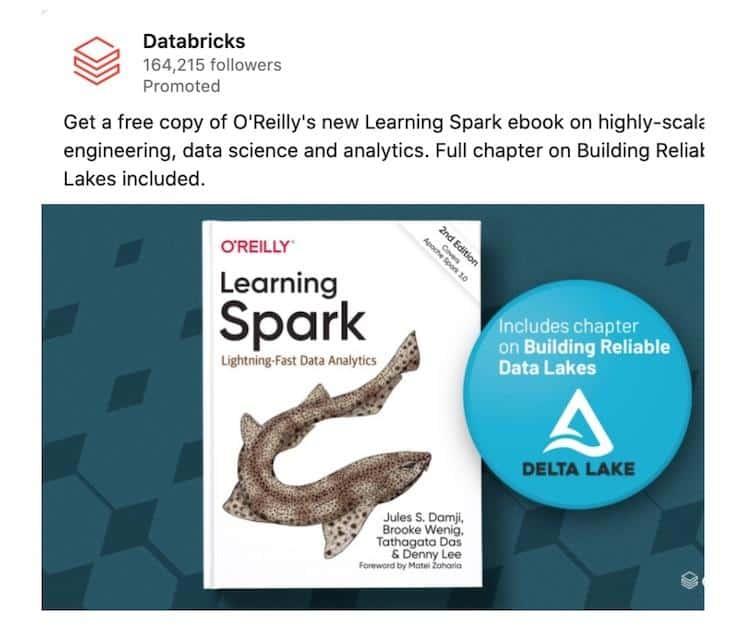
LinkedIn ads offer a variety of targeting features, such as job titles and functions, company size, industry, and more, to ensure you're reaching the right people with your sponsored content.
You can also choose to show ads in the feed or even in the messenger thanks to InMails Linkedin where users are already engaged.
Nowadays, everyone is on Twitter, from startups to presidents.
And the truth is that with more than 145 millions of daily active users, you should probably be too.
If you are curious about the demographics that make up the platform, 63% Twitter users are between the ages of 35 and 65, making it the ideal social network to reach Generation X and the boomers.
But if you're wondering how this platform can benefit your social media marketing strategy, know that 40% of Twitter users would have bought something after seeing it on the platform.
This platform can also be a great way to increase brand awareness, get mentions, and even drive traffic to your website:

With Twitter's character limit of 280, it's important to keep it short and to the point on Twitter.
For those who don't have the patience to rely solely on the organic nature of creating and sharing content and hoping that it will be seen by their target audience...
You'll be happy to hear that brands can reach their goals more quickly with Twitter ads:
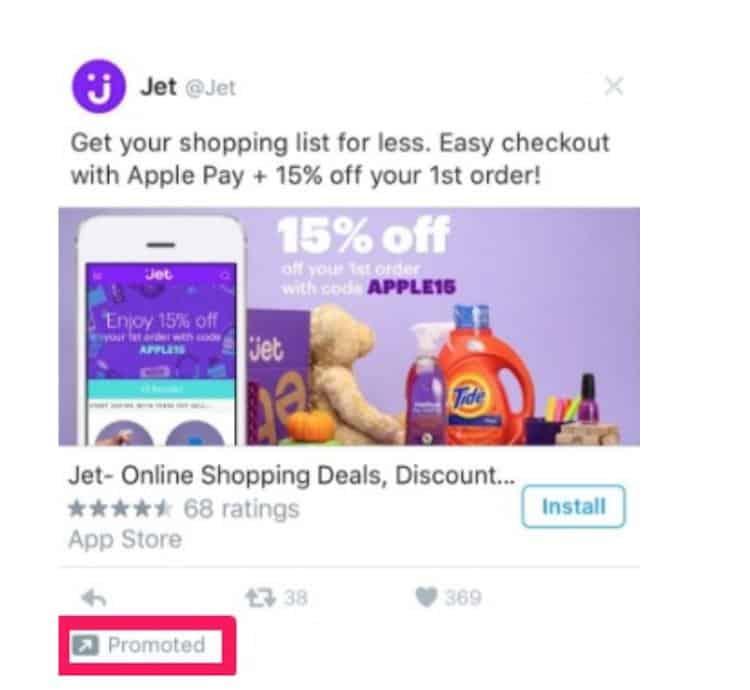
Twitter ads can be a great way to quickly increase your visibility and followers.
However, remember that your content should always be of high quality, otherwise users won't have a reason to engage.
In addition to your social media marketing goals, Twitter can also help you provide better customer service.
With the DM feature, customers can easily send direct messages to brands to resolve issues.
Twitter can be a powerful platform, both for your marketing goals and for providing a positive customer experience.
If you think YouTube is for tutorials and music videos only, think again.
YouTube is the 2Eth The most popular social platform today and the best platform for marketing video content.
In fact 62% Businesses are now using the platform to share video content and develop their business.
When it comes to promoting your business on YouTube, you can take an organic or paid approach.
For those familiar with search engine optimization (SEO), it will be important to apply the same concepts to YouTube to try to rank your content.
Why? Because Youtube is the 2nd largest search engine in the world and is governed by the same SEO rules as search engines.
Things like the title and description of the video will be worth their weight in gold when optimizing for certain keywords.
For example, if you search for “growth hacking” on YouTube, look at the results:
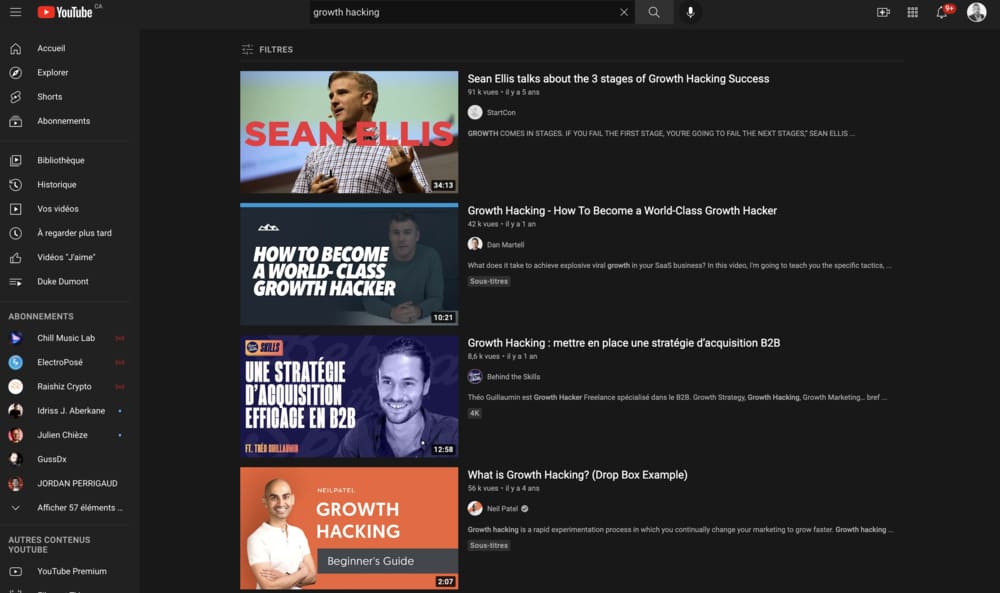
As you can see, the top-ranked videos have eye-catching thumbnails and titles, which entice viewers to click on their video.
If you click on the highest-ranking video, you'll see how the creator uses keywords and hashtags optimized for the keyword to rank:
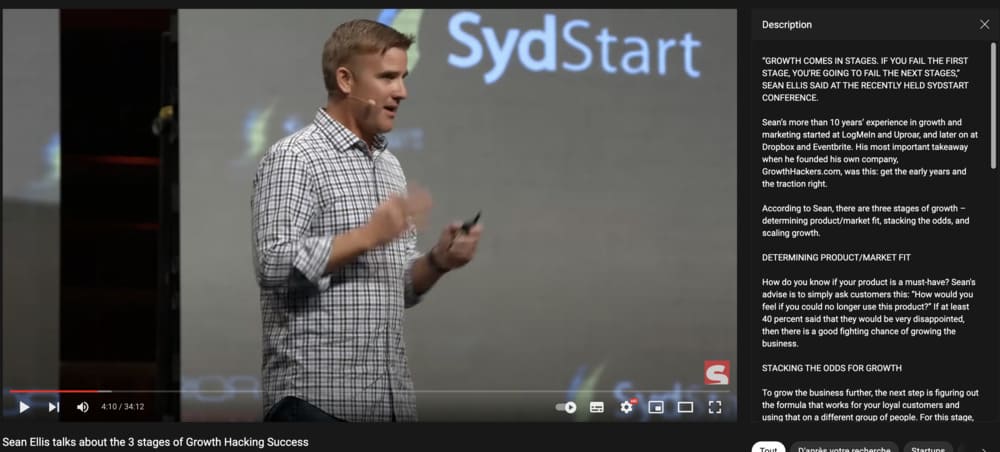
When it comes to YouTube, the best strategy for businesses is usually to teach and add value, like in the videos above.
For example, if your business is a social media marketing tool, you could not only create “how-to” videos on how to use the tool, but also videos that provide tips on social media in general to solve problems for your audience.
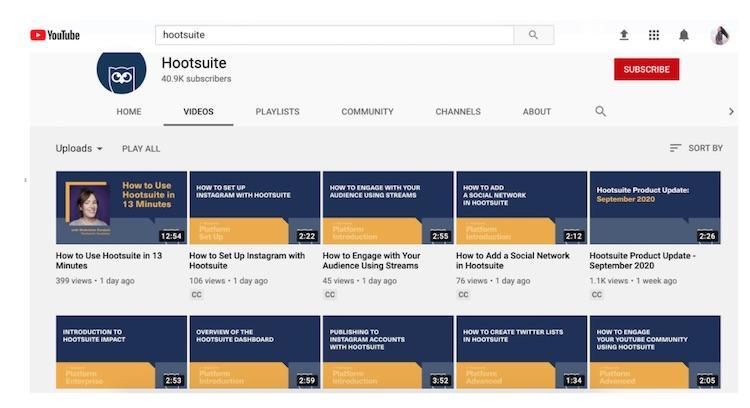
Another way to market your business on YouTube is by running PPC or YouTube ads.
The first type of ad you've probably come across is the In-Stream ad, which is shown in another YouTube video while you wait for the video to start:
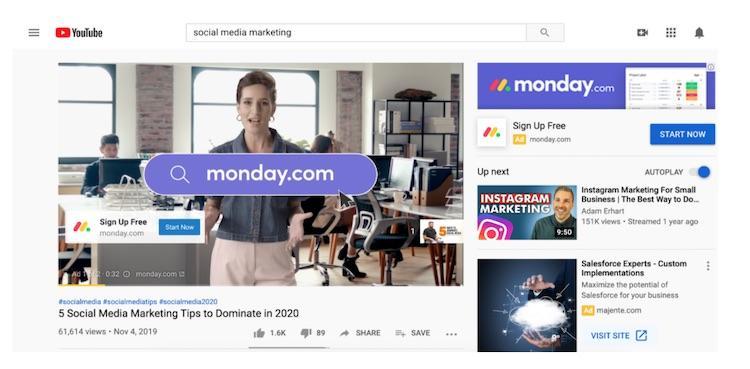
In-Stream YouTube ads may also appear in the middle of videos that are longer than 10 minutes.
This type of ad can be personalized with various calls to action (CTAs) and users generally have the option of skipping the ad after the first 5 seconds, meaning they may not see the entire ad.
The 2Eth The type of YouTube ads are discovery ads, and are essentially videos that are “discovered” at the top of search results (similar to how PPC ads are displayed in Google):

However, discovery ads don't always have to be a video.
Here you can see an example of other more traditional types of ads shown above the results when looking for dropshipping videos:

YouTube offers targeting and campaign options similar to other social media platforms, making it easy for you to reach your target audience.
When you use YouTube as a search engine, it can be a powerful platform for generating traffic and leads for your brand. While there are plenty of YouTube alternatives on the market for video monetization, with the right organic and paid YouTube strategy, you can still make money on this platform.
Now that we've taken a look into the past when it comes to social media and discussed the most popular platforms for building your brand...
You may wonder about the future of social media marketing and how things could change for community managers.
After all, times are constantly changing and what was effective in 2000 is no longer the best strategy in 2020.
But one thing is certain: the possibilities offered by social media marketing are limitless and will continue to grow over time.
When the first platforms appeared, text and blogging were considered kings, but today we are living in interesting times that are beginning to favor video and audio content.
That's why platforms like YouTube have over 2 billion users worldwide and are constantly growing.
For brands that want to remain competitive, it will become imperative to take the bandwagon, otherwise you will end up at the side of the road.
Other future social media trends include the increased use ofartificial intelligence (IA) and Chatbots.
In fact, it's possible that chatbots and other email bots will start to completely replace customer service members in some scenarios, as AI becomes more robust. Currently, chatbots represent 39% of the total number of online chats.
Another growing trend is the use of augmented reality, as we've seen with the various filters on Facebook, Instagram, and Snapchat:

These trends are only going to increase as technology becomes smarter and faster than humans.
The upward trend in social media marketing is also expected to continue with the use of influencer marketing to drive brand sales and revenue, as consumers become smarter about how they make buying decisions.
As every marketer and business owner knows, words are worthless.
When it comes to implementing some of the tactics we've covered above across the various social media platforms, having a strategy is critical...
Otherwise, you will only be spending your money.
We're going to look at the top 6 tips for developing a winning marketing strategy:
First, when defining your social media strategy, you need to identify your goals and key success indicators.
Start by asking the question, “What are we trying to achieve?” and work from there.
For example, if your goal is to increase brand awareness... What fame? How are you going to measure the success of the tactics you use to achieve this goal?
The more specific you are, the better.
A better example might be planning to invest in creating high-quality content with a well-defined objective as such:
“Our goal is to increase our number of followers on Instagram by 15% in the next quarter and the number of social shares by 50%. We will be using tools such as Crowdfire and Google Alerts to monitor mentions and shares. We'll use marketing analytics tools to measure the success of our campaign and compile weekly reports on our growth and content performance to track progress.”
Remember, at the end of the day, if you can't measure it, you can't improve it.
Once you've identified your main goals and metrics, the next step is to research and identify your target audience.
Are you going to target men, women, or both? What age group? Specific locations or the whole world?
Don't forget the advanced targeting options offered by social platforms like Facebook and Instagram. The more specific you can be about the people you are targeting, the better.
For example, if you know that you are targeting men between the ages of 35 and 65 who live in Montreal and are interested in technology and soccer, you will be much better equipped than if you focus on a single demographic group, like men in Canada.
The more specific you are about your target audience, the more effective your strategy will be and the less likely you are to generate poor quality leads.
Marketers often realize that their competitors have already done all the work for them.
Instead of trying to reinvent the wheel, look at what your competitors are doing.
Check out their social profiles and how they appeal to their target audience, as it's likely that the audience is very similar to yours.
Then, see how users engage with their content and what types of social media posts are getting the most interest.
I'm not saying you should copy what your competitors are doing word for word, but having this knowledge can certainly help you develop an effective strategy and avoid wasting a lot of time at the outset.
Across all of your social accounts, all you need to do is create and share thoughtful, engaging content.
As I like to say, don't post content just for the sake of sharing content.
Make sure it has meaning and value for your audience.
If you're not sure what types of content to publish, conduct market research (as well as competitive analysis), or consider launching a campaign or survey to directly interview your target market.
Whether or not you have a member of your team ready to take responsibility for promoting your brand on social media, it's helpful to use social media management tools or to hire a social media manager.
Some social media tools like Hootsuite or Buffer can automate the scheduling and publishing of your messages, freeing up time for other tasks.
By running your content on automatic pilot, you'll also be more likely to maintain a consistent content schedule, ensuring a more effective strategy.
Part of your research will be identifying the ideal times to post on social media - make sure you don't miss the best times by scheduling your posts in advance.
Finally, the final step in a successful social media marketing strategy is to assess your results (monthly, quarterly, etc.) and see what works and what doesn't.
Use a variety of marketing and marketing analytics tools to track progress and create custom reports to present to your team.
After identifying your strengths and weaknesses, work to optimize your future strategy by making adjustments if necessary.
We've covered a lot of topics in this guide, from the definition of social networks to the history of platforms, to the best social networks for marketing your business, and even the future of social media, as well as tips for creating an effective social media strategy.
What questions do you have about social media marketing or what platforms do you plan to use in your strategy if you haven't already?
Remember that with patience and consistency, you too can use the power of social media to generate more traffic and revenue for your business.
Discover other carefully selected articles to deepen your knowledge and maximize your impact.